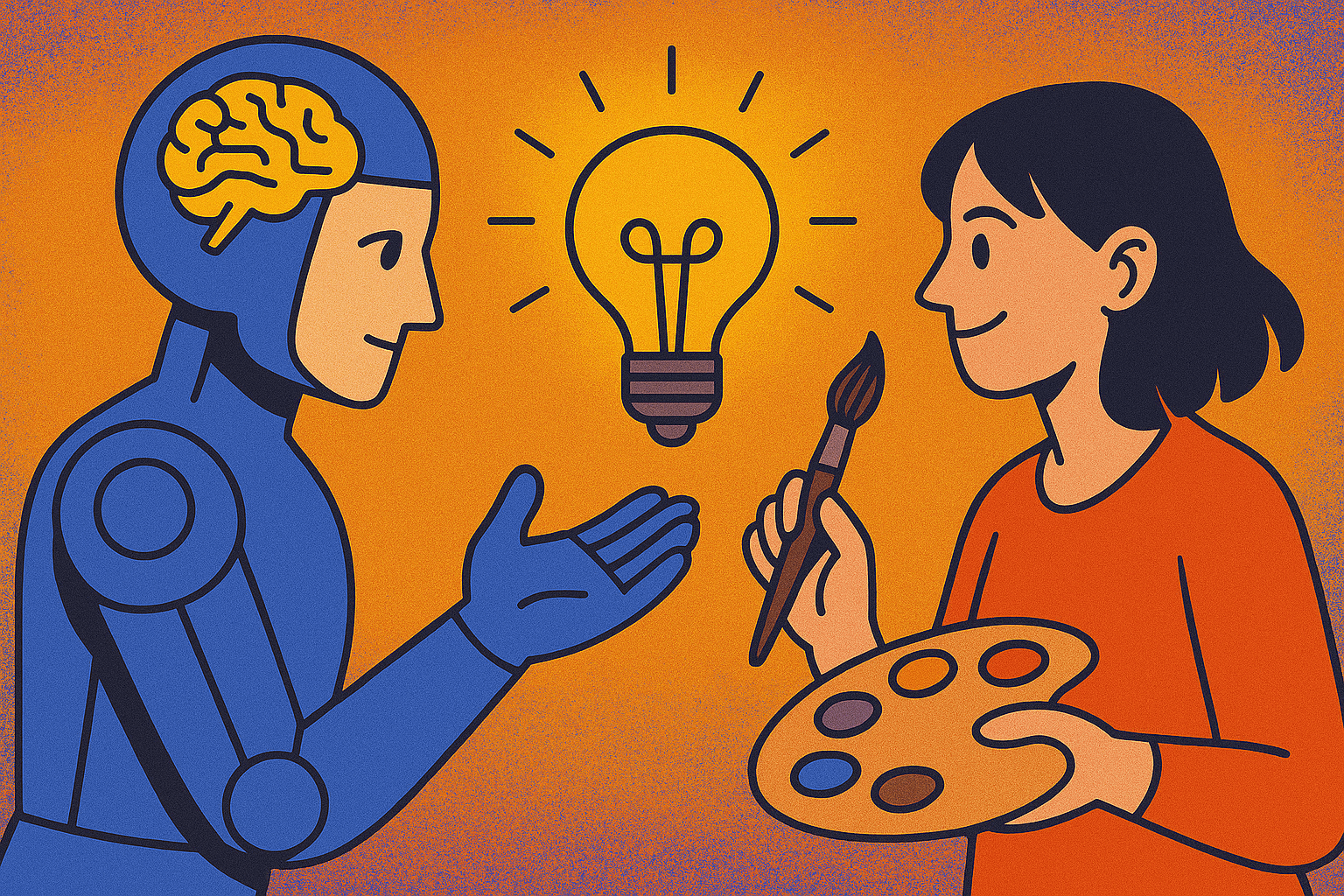Exploring the possibilities of AI and Human Creativity
Kratika Nyati
Jan 8, 2025

Here’s a narrative-style blog post exploring the fusion of AI and human creativity, designed to be immersive and descriptive. The tone is reflective yet forward-looking, and you can easily insert images at the noted places.
Exploring the Possibilities of AI and Human Creativity
Somewhere in a quiet Tokyo studio, a painter dips her brush into ink and gently outlines the silhouette of a crane mid-flight. On the other side of the globe, in a dimly lit room filled with screens, a generative AI model is producing hundreds of crane-inspired designs—each unique, each mesmerizing. Both creators are solving the same artistic prompt. One draws from memory and emotion; the other from datasets and algorithms. And somehow, both arrive at beauty.
We often ask whether machines can be truly creative, but perhaps the better question is: What can we create when we work together?
The idea that creativity is purely human has long been cherished. After all, creativity is messy, nonlinear, and deeply emotional. It’s born of late-night scribbles, heartbreak, spontaneity, and joy. But artificial intelligence, once seen only as a cold engine of logic, is now learning how to play in the same sandbox. AI is writing poetry, composing music, designing products, and even assisting in filmmaking. And in this new era, it's not replacing creatives—it’s expanding the playground.
Take, for example, the Emmy-winning short film The Crow: AI Dreams, co-created by visual artist Glenn Marshall. The film, hauntingly surreal and strangely poetic, was generated using an AI trained on hundreds of dance and visual sequences. While the AI provided the form and movement, the human artist gave it soul—curating the flow, the soundtrack, and the emotion. Similarly, in the world of music, artists like Holly Herndon use AI not just as a tool but as a collaborator—her AI voice clone, "Holly+", sings in harmonies no human vocal cords could achieve alone.
